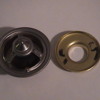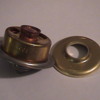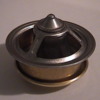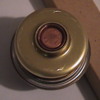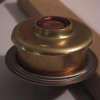Where also are the calorie disappation rates of the radiator, or more correctly the cooling system since in this instance the pipes to and from the radiator are also part of the equation?
In fact, adding surface area to those tubes will add to the ability of the entire system to dissipate heat, effectively adding capacity to that system.
The differences between the two impellers was documented by the Ford Trans-am racing team in 1969.
The two impeller designs available remain to this day essentially unchanged.
Given the choice of the two I would select the vaned impeller design but the difference really is virtually negligible to all but a dedicated race car.
Panteras with the inferior paddle design regularly run in open track events and show no significant differences with others in performance.



